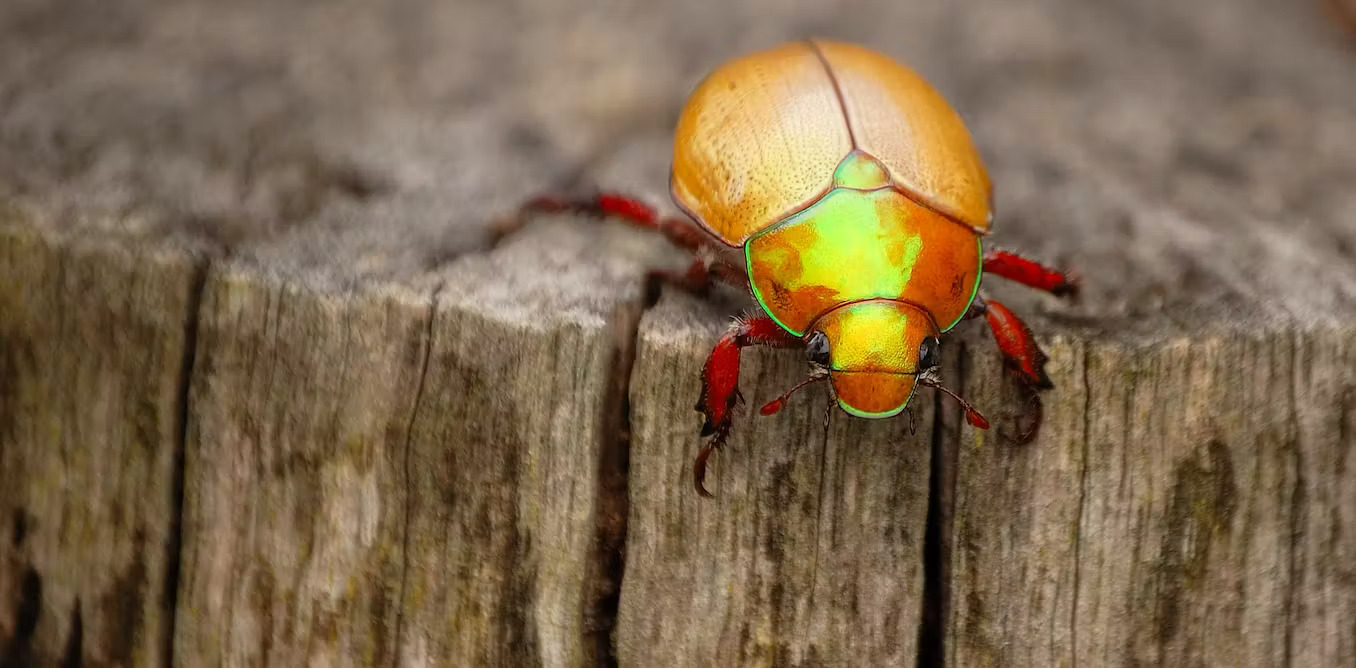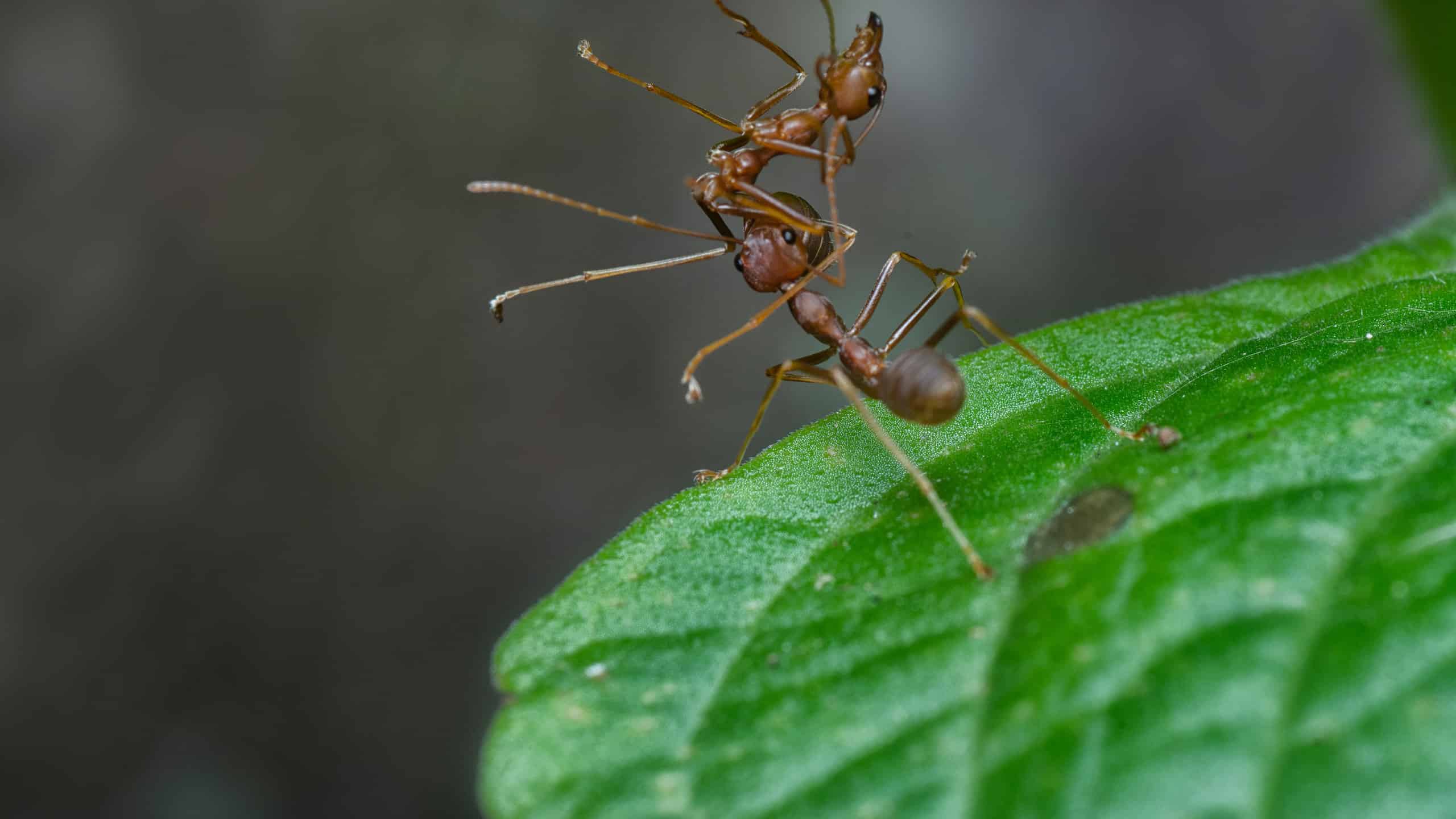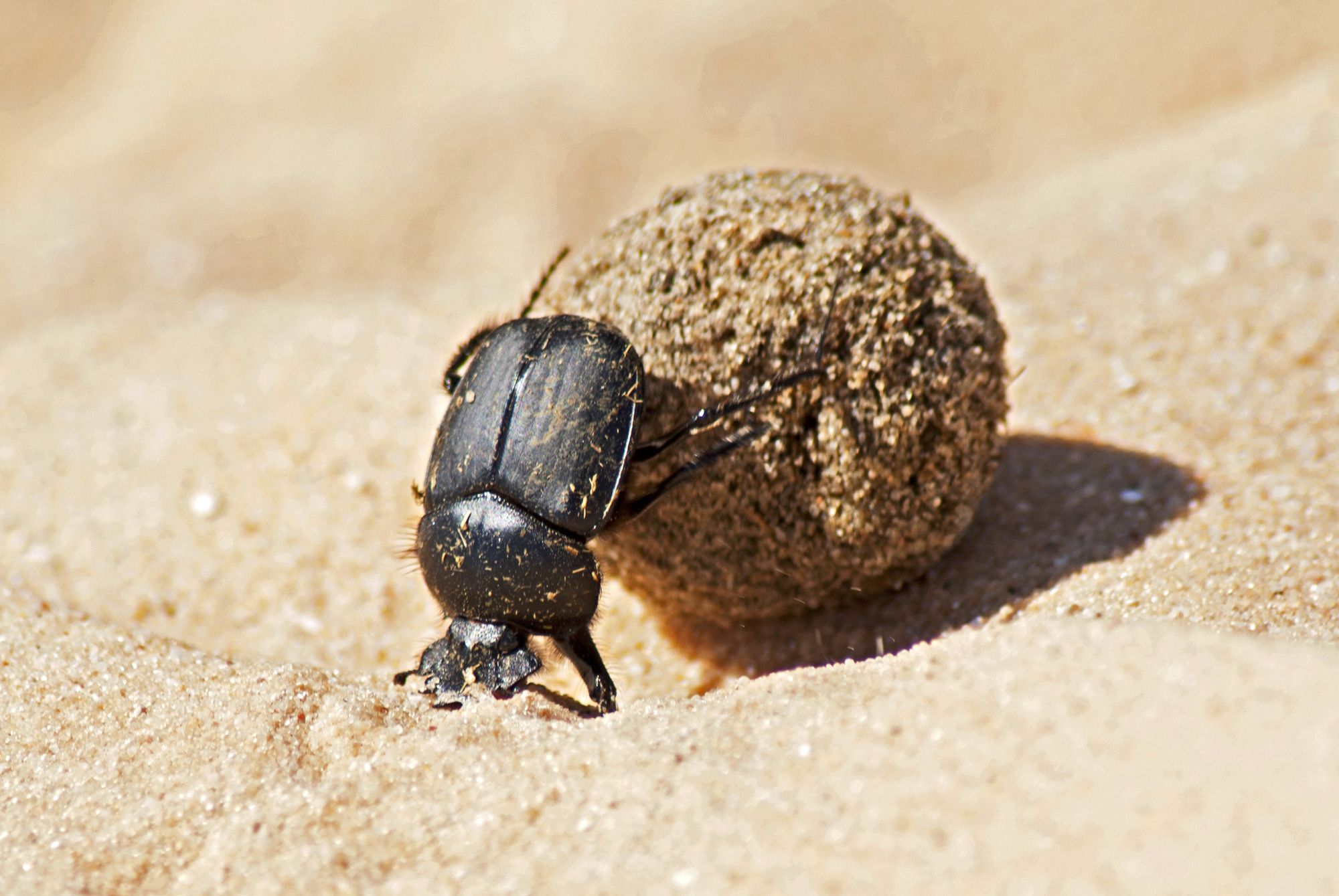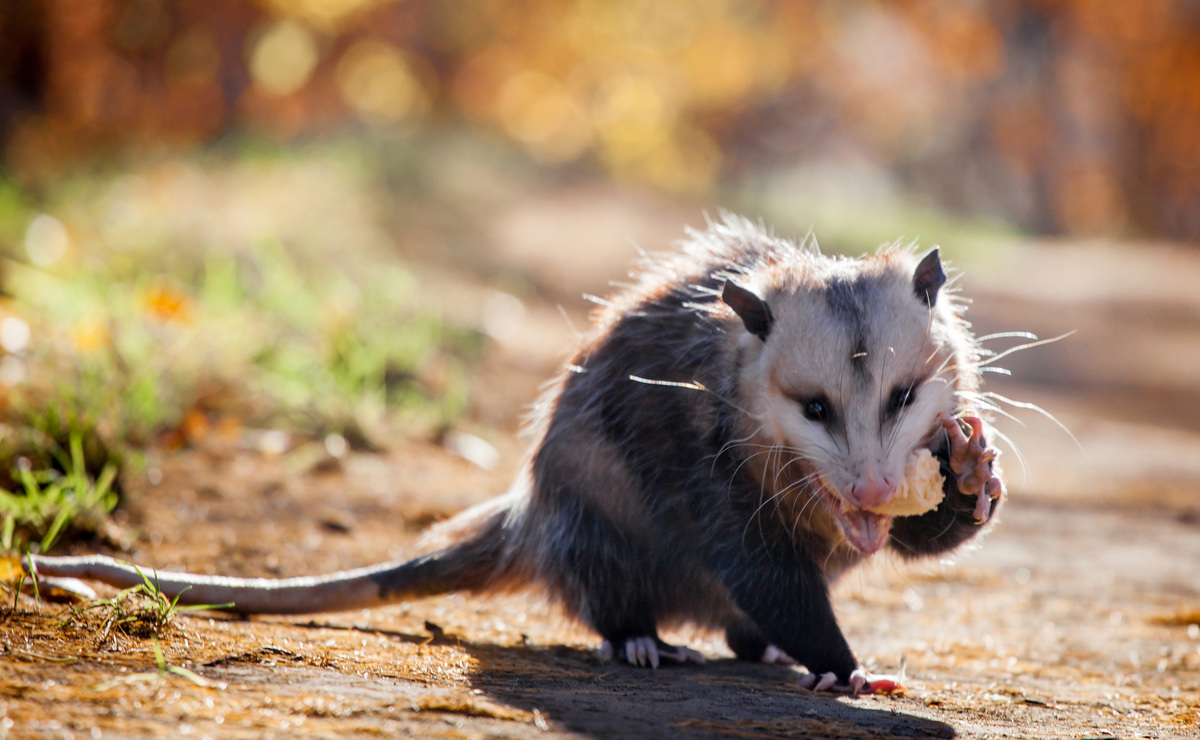Home>Gardening News and Trends>Latest News>What Colors Do Insects See
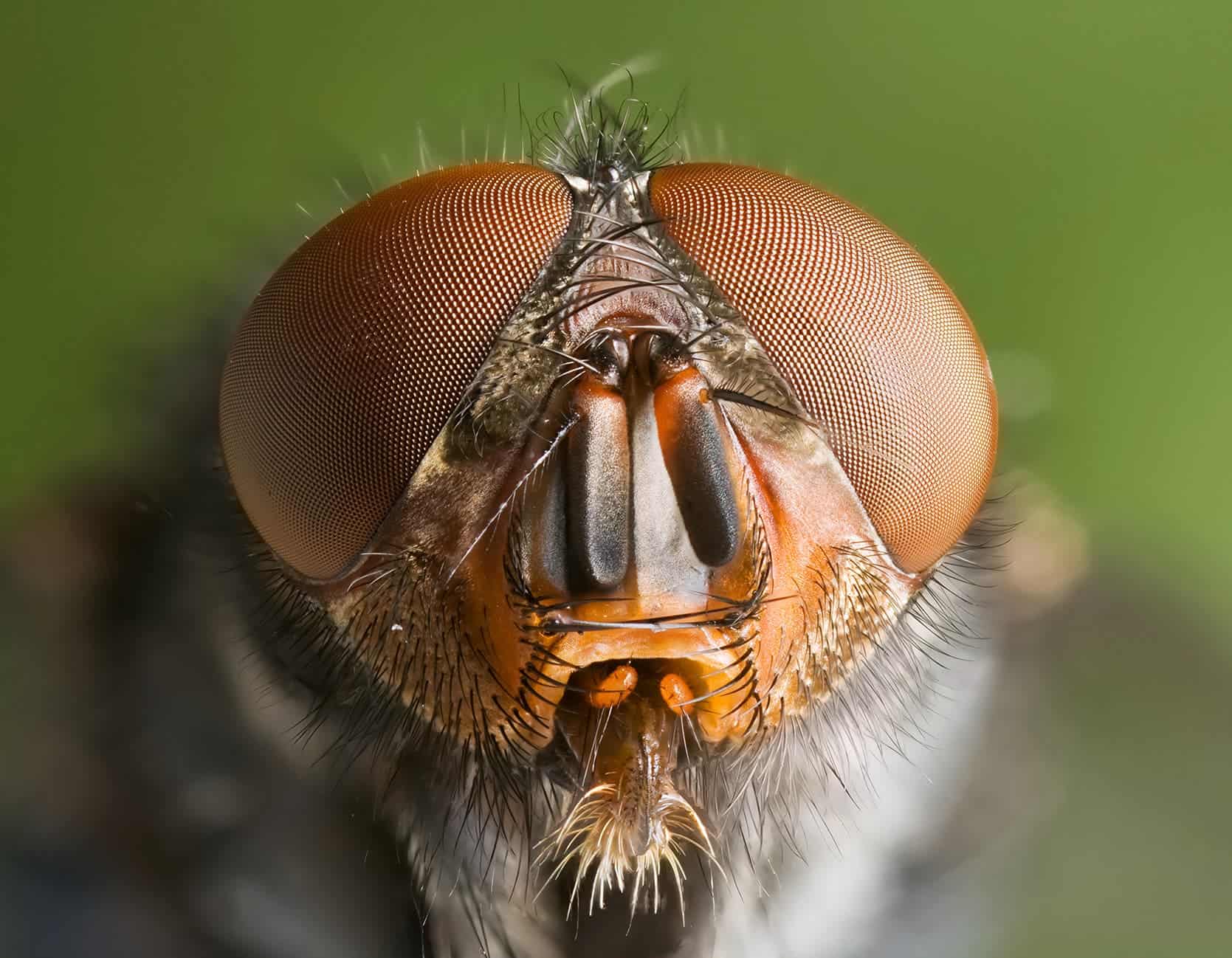

Latest News
What Colors Do Insects See
Modified: January 22, 2024
Discover the Latest News on What Colors Do Insects See and uncover fascinating insights into the visual world of insects. Stay updated with cutting-edge research and advancements that shed light on the spectrum of colors insects perceive.
(Many of the links in this article redirect to a specific reviewed product. Your purchase of these products through affiliate links helps to generate commission for Chicagolandgardening.com, at no extra cost. Learn more)
Table of Contents
Introduction
When it comes to the world of insects, there is much more than meets the human eye. These fascinating creatures have a unique ability to perceive colors in a way that is far different from our own. While humans have a trichromatic vision that allows us to see a wide range of colors, insects have a more complex and diverse visual system. Understanding how insects see and perceive color is not only intriguing but also has practical applications in various fields.
The study of insect vision has revealed that many insects have the ability to see colors that are beyond the range of human perception. This means that what may seem like a simple flower to us has a completely different appearance to an insect. By delving into the intricacies of insect vision, scientists have uncovered a world of vibrant hues and patterns that are invisible to the human eye.
In this article, we will explore the basics of insect vision and how insects perceive colors. We will dive into the fascinating realm of ultraviolet vision and discover the differences between dichromatic and trichromatic insects. Additionally, we will explore the color preferences of insects and how they use their color perception in various aspects of their lives.
By delving into the world of insect color vision, we can gain a deeper understanding of these incredible creatures and the visually stunning world they inhabit. So, let’s embark on this colorful journey and discover what colors insects see!
The Basics of Insect Vision
Insects have a visual system that is significantly different from humans. While humans have two eyes that work together to create a three-dimensional image, most insects have compound eyes composed of thousands of individual units called ommatidia. These ommatidia act as tiny lenses that capture light and create a mosaic-like image in the insect’s brain.
Unlike humans, who have a trichromatic vision that relies on three types of color receptors (cones) in the eye, insects have a different set of color receptors. Most insects have two types of color receptors, known as dichromatic vision. These receptors are sensitive to different wavelengths of light, allowing them to perceive a narrower range of colors compared to humans.
One important aspect of insect vision is their ability to see ultraviolet light. Humans cannot perceive ultraviolet light, but many insects have specialized photoreceptors that allow them to see this invisible part of the spectrum. Ultraviolet vision is particularly significant for insects that rely on floral signals or engage in mate selection, as many flowers have ultraviolet patterns that guide insects towards them or indicate the presence of nectar.
The resolution of insect vision is also different from humans. Insects generally have lower acuity and poorer depth perception compared to us. However, they compensate for this by having a wider field of view, allowing them to detect movement and locate resources more easily.
Another interesting aspect of insect vision is their ability to detect polarized light. Polarization refers to the orientation of light waves, and many insects can use this information to navigate, find food, and communicate with each other.
Overall, the basics of insect vision reveal a fascinating world of complex visual systems that are adapted to the unique needs and behaviors of these small creatures. By understanding the intricacies of insect vision, we can begin to unravel the mysteries of how they perceive color and interact with their environment.
The Spectrum of Colors
The spectrum of colors that insects can perceive is quite different from what humans can see. While humans have a wide range of colors that we can distinguish, insects have a narrower spectrum due to their dichromatic vision. This means that their color perception is limited to certain wavelengths of light.
Insect color vision is often centered around the blue and ultraviolet (UV) range of the spectrum. This is because many insects have receptors that are sensitive to these wavelengths of light. For example, bees have receptors that are geared towards detecting blue and UV light, which helps them locate flowers. Butterflies also rely heavily on their sensitivity to UV light to identify specific patterns on flowers.
Interestingly, some insects, such as beetles and butterflies, have structures on their wings that reflect and scatter light in unique ways. These structures, known as scales, create iridescence, allowing the insects to display a stunning array of colors that can change depending on the angle of light. This is especially prominent in butterflies, where the scales on their wings can create a mesmerizing kaleidoscope of colors.
It’s important to note that not all insects see the same colors. The specific range of colors that an insect can perceive depends on the types of color receptors they have. For example, flies have been found to have a more limited color vision compared to bees and butterflies.
Overall, the spectrum of colors that insects can see is a fascinating subject of study. By understanding the specific range of colors that different insects can perceive, we can gain insights into how they interact with their environment, locate food sources, and communicate with one another.
Ultraviolet Vision
One of the most fascinating aspects of insect vision is their ability to perceive ultraviolet (UV) light. While humans are unable to see UV light, many insects have specialized photoreceptors that allow them to detect this invisible part of the spectrum.
UV vision is particularly important for insects that interact with flowers. Many flowers have unique patterns and markings on their petals that are only visible in UV light. These patterns serve as a guiding beacon for insects, directing them towards the flower’s nectar or indicating its readiness for pollination.
For example, bees, which are avid pollinators, have specialized color receptors that enable them to see in the UV range. They are able to perceive the distinct patterns and markings on flowers that can guide them towards their food source. This unique ability not only helps bees locate flowers efficiently but also allows them to differentiate between various flower species.
Butterflies also rely heavily on their UV vision. Their wings often have intricate UV-reflective patterns that are invisible to human eyes but highly attractive to potential mates. These UV signals play a crucial role in butterfly courtship and mating behaviors.
In addition to flower interactions and mate selection, UV vision also aids insects in navigation. Some species of ants, for example, use the polarization of UV light to orient themselves and find their way back to their nests.
Understanding the significance of UV vision in insects provides valuable insights into their ecological interactions and behaviors. It showcases the unique adaptations these creatures have developed to perceive and interact with the world around them, emphasizing the importance of their visual capabilities.
Dichromatic and Trichromatic Insects
Insects have an intriguing variation in their color vision capabilities. While humans have trichromatic vision, meaning we rely on three types of color receptors (red, green, and blue cones) to perceive a wide range of colors, insects typically have dichromatic vision, utilizing only two types of color receptors.
Dichromatic insects possess color receptors that are sensitive to specific wavelengths of light, often in the blue and green range. This limited range of color perception affects how insects perceive their surroundings compared to humans. It also influences their ability to differentiate between certain colors and shades.
On the other hand, trichromatic insects have three types of color receptors, similar to humans. However, trichromatic insects do not perceive colors in the same way we do. They have different sensitivity curves, meaning their color perception may be biased towards certain wavelengths, leading to variations in how they perceive colors compared to humans.
It is important to note that not all insects have the same type of color vision. Different species may have variations in the number and sensitivity of their color receptors, resulting in different abilities to perceive and distinguish colors.
For example, honeybees are dichromatic insects, with color receptors that are sensitive to ultraviolet, blue, and green light. This enables them to perceive a range of colors, including blue and UV-reflective flowers, which appear vibrant to their eyes. On the other hand, butterflies are known to be trichromatic insects. They possess color receptors that can detect ultraviolet, blue, and red light, allowing them to experience a wider spectrum of colors and perceive intricate patterns on flowers.
Understanding the differences between dichromatic and trichromatic vision in insects provides valuable insights into their perception of the world. It highlights the unique adaptations that different insect species have developed to navigate and interact with their environment, further emphasizing the diversity and complexity of the insect kingdom.
Color Preferences in Insects
Insects have distinct preferences when it comes to colors, with certain hues and patterns eliciting stronger responses from them. These color preferences are important for various aspects of their lives, including finding food sources, identifying mates, and avoiding predators.
When it comes to flower selection, insects exhibit a strong attraction to certain colors. Bees, for example, are highly attracted to flowers that are blue, purple, and yellow. These colors often signal the presence of nectar, which serves as a valuable food source for bees. Butterflies, on the other hand, are attracted to a wider range of colors, including red, orange, and pink, as these colors are commonly found on flowers that provide ample nectar rewards.
Color preferences in insects often have evolutionary origins. Flowers have evolved to present specific colors and patterns that are appealing to their target pollinators. This creates a mutually beneficial relationship, where the insects receive nectar and the flowers get pollinated.
Similarly, color preferences play a role in mate selection for many insects. Male butterflies, for instance, often display vibrant and intricate color patterns on their wings, which are used to attract females. These patterns can include combinations of bright colors, like red, yellow, and orange, which are visually striking to female butterflies.
Additionally, color preferences in insects can also serve as a means of communication. Some insects use specific colors to signal danger or to mimic other species. For example, some harmless insects may adopt the bright coloration of toxic species, tricking predators into thinking they are dangerous.
It is important to note that while certain colors may be attractive to a specific insect species, individual preferences can also vary. Factors such as lighting conditions, environmental cues, and personal experiences can influence an insect’s response to different colors.
By understanding the color preferences of insects, researchers can gain a deeper understanding of their behaviors and interactions with the environment. This knowledge can be applied in various fields, including agriculture and conservation, to create more effective strategies for attracting beneficial insects and preserving their populations.
How Insects Use Color Perception
Insects rely heavily on their color perception for a variety of purposes in their daily lives. The way they perceive colors plays a crucial role in foraging, mate selection, navigation, and self-defense.
One of the primary uses of color perception in insects is for locating food sources, particularly flowers. Many insects, such as bees, butterflies, and beetles, are attracted to specific colors or color patterns on flowers. These colors serve as visual cues that indicate the presence of nectar or other food rewards. By perceiving and responding to these colors, insects can efficiently locate and extract valuable resources from flowers.
In terms of mate selection, color perception is vital for the courtship and mating behaviors of many insects. Male insects often display brightly colored patterns, such as vibrant wings or intricate body markings, to attract females. Females, in turn, evaluate the color signals of potential mates as a means of assessing their quality and genetic fitness.
Color perception also plays a role in communication and recognition among insects. Some species utilize specific colors as signals to communicate with each other, conveying information about mating readiness, aggression, or territorial boundaries. In addition, color patterns can be used by insects to recognize members of their own species and distinguish them from potential competitors or predators.
Insects also use color perception as a navigational tool. For example, monarch butterflies rely on their ability to perceive the position of the sun and its angle of polarization, which helps them navigate during their long-distance migrations. Certain insects, like ants, use the polarization of light to orient themselves and locate their nests, while others use the patterns of polarized light on bodies of water to find suitable breeding sites.
Furthermore, color perception is involved in self-defense strategies of many insects. Some species have evolved bright or warning colors to deter predators, signaling their unpalatability or toxicity. Other insects, like stick insects and leafhoppers, may have coloration that enables them to blend seamlessly into their surroundings, providing them with camouflage against potential threats.
Overall, the color perception of insects serves a multitude of purposes and is essential for their survival and reproduction. By understanding how insects utilize color in their behaviors and interactions, we can gain valuable insights into their ecology and develop strategies for their conservation and management.
Mimicry and Camouflage
Insects have evolved remarkable strategies for mimicry and camouflage, utilizing color perception to deceive predators or blend seamlessly into their surroundings. Mimicry and camouflage are essential survival mechanisms that allow insects to avoid being detected or recognized as prey.
One fascinating form of mimicry is known as Batesian mimicry, where a harmless insect mimics the appearance of a toxic or dangerous species. By adopting similar color patterns or markings, the mimic insect deters potential predators who have learned to associate those colors with danger. This form of mimicry relies on the predator’s visual recognition of certain colors and shapes, highlighting the significance of color perception in both the predator and the prey.
Camouflage is another strategy employed by insects to remain hidden from predators. Some insects have evolved coloration and patterns that closely resemble their environment, such as the famous stick insects that resemble twigs or the leafhoppers that mimic the colors and shapes of leaves. Through their color perception, these insects are able to detect and adapt to the specific colors and patterns of their surroundings, allowing them to blend in seamlessly, becoming nearly invisible to potential threats.
Color perception is crucial for these mimicry and camouflage strategies to be effective. Insects need to accurately perceive and replicate the colors and patterns of the species they are mimicking or their environment. This ability to accurately perceive their surroundings allows them to make adjustments in their behavior, posture, and coloration to enhance their mimicry or camouflage, increasing their chances of survival.
Mimicry and camouflage are not only important for avoiding predation but also for enhancing reproductive success. In some cases, female insects are more likely to mate with males that exhibit accurate mimicry or camouflage. This preference ensures the survival of offspring that can inherit these advantageous traits and increase their chances of survival in their respective environments.
The study of mimicry and camouflage in insects provides valuable insights into the intricate relationships between predators and prey, and the role of color perception in shaping these interactions. It showcases the remarkable adaptability and ingenuity of insects in utilizing color as a survival mechanism, further emphasizing the diverse and intricate world of insect biology.
Attraction to Flowers
One of the most well-known and significant interactions between insects and color is their attraction to flowers. Insects, such as bees, butterflies, and beetles, play a crucial role in pollinating flowers, facilitating their reproduction and ensuring the production of fruits and seeds.
Flowers have evolved diverse strategies to attract insect pollinators, and color plays a key role in this process. The vibrant and varied colors of flowers serve as visual signals that help insects locate and identify suitable food sources.
Many flowers have evolved to display distinctive color patterns that are highly attractive to specific insect pollinators. For example, bees are particularly drawn to flowers that are blue, purple, or yellow, as these colors are easily visible to them. Similarly, butterflies are often attracted to a wide range of colors, including red, orange, and pink. These colors serve as visual cues to guide the insect pollinators towards the rich sources of nectar that flowers offer.
Interestingly, some flowers have evolved to have markings in the ultraviolet (UV) range, which are invisible to humans but highly visible to insects with UV vision, such as bees and butterflies. These UV markings act as landing strips, directing the insects towards the nectar-filled center of the flower.
In addition to color, flowers may also emit specific scents or produce nectar to further entice insect visitors. The combination of visual and olfactory cues provides a comprehensive signal that guides insects to the flower, ensuring successful pollination.
The mutualistic relationship between insects and flowers highlights the importance of color perception. Insects benefit from the rich food sources provided by flowers, while flowers rely on insects for cross-pollination and reproductive success.
Researchers and horticulturists often utilize knowledge of insect color preferences to attract specific pollinators to their gardens or agricultural fields. By selecting and cultivating flowers with colors that are attractive to target insect pollinators, they can enhance the pollination process and increase the yield and quality of crop production.
Without the striking colors of flowers and the intricate color perception abilities of insects, the mutually beneficial relationship between these two groups would not exist, underscoring the significance of color in the natural world.
Conclusion
Exploring the world of insect vision and color perception reveals a fascinating and complex realm that is vastly different from our own human perception. Insects possess unique visual systems that allow them to perceive colors and patterns in ways that are beyond our comprehension.
From the basics of insect vision, where compound eyes and specialized color receptors come into play, to the spectrum of colors they can perceive, including the intriguing world of ultraviolet vision, insects have developed remarkable adaptations to interact with their environment.
The distinction between dichromatic and trichromatic vision in insects highlights the diversity of color perception within different species. This diversity plays a significant role in their behaviors, such as flower selection, mate selection, navigation, and self-defense.
Color preferences in insects have evolved through natural selection and provide insights into their ecological interactions. Understanding these preferences is valuable not only for studying insect behavior but also for practical applications in fields such as agriculture and conservation.
Mimicry and camouflage serve as examples of how insects utilize color perception to deceive predators or blend seamlessly into their surroundings. These remarkable adaptations showcase the intricate relationship between color perception and survival strategies in the insect world.
Lastly, the attraction between insects and flowers underscores the important role that color plays in the pollination process. Flowers have evolved to display specific colors and patterns, serving as visual signals to lure insect pollinators and ensure their reproductive success.
Overall, delving into the world of insect vision and color perception provides us with a deeper appreciation for the incredible adaptations and strategies that insects have developed to navigate and thrive in their environments. It also highlights the immense diversity and complexity of the natural world and the importance of color in shaping the lives of these fascinating and vital creatures.



